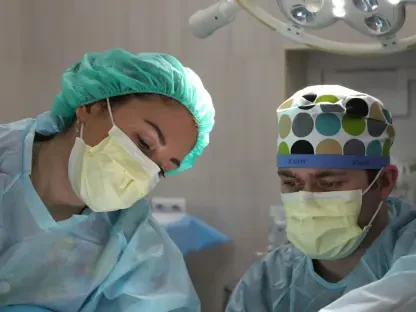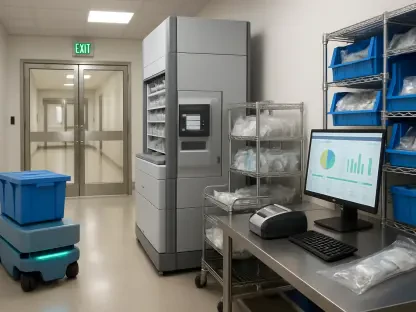In recent years, telemedicine has grown exponentially, offering numerous benefits for healthcare delivery. A recent study published in PLOS ONE examined whether home telemedicine-based hospital care (HAH) could serve as a viable alternative to traditional in-hospital care for seniors. Conducted at Sheba Medical Center in Israel, the study included both COVID-19 and non-COVID-19 patients, primarily focusing on older adults with a median age of around 80 years. This demographic is particularly relevant due to their frequent need for medical attention and susceptibility to hospital-related complications.
The emerging trend of telemedicine has led many to question its potential to replace traditional hospital care, especially for the elderly who often require extensive supervision and prompt medical interventions. The study aimed to address this by contrasting the HAH model with conventional hospital care through a comprehensive and meticulously designed study. By using real patient data and a robust comparative approach, the findings offer valuable insights into the practicality and effectiveness of telemedicine for senior patient populations. As the healthcare landscape continues to evolve, such studies are pivotal in informing future practices and policies.
The Scope and Design of the Study
The study recorded data from 159 patients using the HAH model and compared it with 477 matched in-hospital counterparts. By leveraging a robust comparative approach, the researchers could draw meaningful contrasts between home-based and hospital-based care. This method ensured that the findings were grounded in direct and effective comparisons, minimizing biases and providing a clear picture of the advantages and disadvantages of each care setting.
The comprehensive design included daily telemedicine visits from internal medicine specialists. This was enhanced with in-person nursing care and advanced remote monitoring technologies, providing a detailed understanding of the patients’ conditions. This holistic approach allowed for a seamless blend of traditional and modern healthcare techniques, promoting continuous medical supervision in the comfort of the patients’ homes.
By focusing on both COVID-19 and non-COVID-19 patients, the study offered a broader perspective on the effectiveness of the HAH model across various health conditions. The inclusion of older adults, a demographic particularly susceptible to complications, highlighted the potential of telemedicine to address their unique healthcare needs. This approach not only provided an extensive dataset for analysis but also reinforced the relevance of the findings for medical practitioners and policymakers aiming to optimize care for the elderly.
Shorter Hospital Stays: A Major Advantage
One of the standout findings from the study was the reduction in hospital stays among HAH patients. Both COVID-19 and non-COVID-19 patient groups experienced hospital stays that were, on average, two days shorter than their in-hospital peers. This is particularly significant given that it did not lead to an increase in readmission rates, either at the 30-day mark or over the span of one year. This reduction in the duration of care not only implies a potential cost-saving for healthcare systems but also highlights the efficiency of the HAH model. The ability to provide high-quality care without needing extended hospital stays is a clear advantage, relieving some of the burden on healthcare facilities and resources.
Moreover, reducing hospital stays is particularly beneficial for older adults, who are more prone to infections and other complications during prolonged hospitalizations. The HAH model allows them to receive necessary treatments while staying in their familiar home environment, thereby reducing stress and improving overall well-being. By demonstrating that shorter hospital stays do not compromise care quality, the study supports the integration of telemedicine into mainstream healthcare practices.
Lower Mortality Rates: A Life-Saving Potential
The study revealed significant reductions in 30-day mortality rates for those in the HAH model. Specifically, for COVID-19 patients, the risk of 30-day mortality was reduced by 66% compared to those receiving traditional hospital care. Similarly, non-COVID-19 patients had a 62% lower 30-day mortality risk. These statistics underscore the life-saving potential of the HAH model. Lower mortality rates suggest that patients receive comparable, if not superior, medical care in their homes. This adds another layer of credibility to the effectiveness of telemedicine-based hospital care, especially for older adults who are at a higher risk of severe outcomes from hospital-based complications.
The significant reduction in mortality rates is a testament to the quality of care delivered through the HAH model. It emphasizes that telemedicine does not merely replicate hospital care but can enhance patient outcomes by providing timely and tailored medical interventions. This advantage is crucial for seniors, who often face multiple health challenges and require specialized attention. By proving that telemedicine can lower mortality rates, the study paves the way for wider adoption and acceptance of remote healthcare solutions.
Telemedicine Implementation: Combining Traditional and Modern Care
The implementation of telemedicine in the HAH approach was not merely about using technology but was a well-coordinated effort to combine traditional and modern healthcare methods. Daily telemedicine visits were supplemented with in-person nursing care, ensuring that patients received comprehensive medical attention. Advanced remote monitoring technologies provided real-time data and continuous health supervision, mitigating potential risks. This combination allows for a versatile approach to patient care. Patients can benefit from the convenience and comfort of being at home while still receiving the medical supervision necessary for their recovery. It highlights the adaptability of telemedicine in meeting complex healthcare needs.
The strategic integration of telemedicine with traditional care modalities showcases the potential for a harmonious blend of old and new practices. By retaining elements of conventional healthcare within a telemedicine framework, the HAH model ensures that patients do not miss out on critical aspects of care. This hybrid approach can be particularly effective in managing chronic conditions and ensuring consistent follow-ups, crucial for older patients. The successful implementation of telemedicine in this manner demonstrates its practicality and potential for broader application.
Addressing Systemic Healthcare Challenges
The HAH model could be a game-changer in addressing some of the systemic challenges faced by global healthcare systems. Given the frequent shortages in infrastructure, resources, and healthcare professionals, an efficient alternative like the HAH model could alleviate significant pressures. The ability to provide effective care outside traditional healthcare facilities can free up resources and personnel for other critical tasks. Moreover, reducing the length of hospital stays and lowering mortality rates can significantly influence overall patient outcomes and healthcare costs. This model presents a promising solution for healthcare systems worldwide, striving to maintain high-quality care in increasingly resource-constrained environments.
In a world where healthcare systems are often stretched thin, the adoption of telemedicine can lead to more sustainable practices. By shifting some aspects of care to the home environment, healthcare systems can become more resilient and better equipped to handle surges in demand, such as those seen during pandemics. The HAH model represents a forward-thinking approach to healthcare delivery, capable of meeting the evolving needs of societies while safeguarding the well-being of older adults.
Future Research and Potential for Scalability
Telemedicine has seen explosive growth in recent years, providing major advantages for healthcare delivery. A recent PLOS ONE study explored whether home telemedicine-based hospital care (HAH) could be a viable substitute for traditional hospital care for seniors. The research, conducted at Sheba Medical Center in Israel, included both COVID-19 and non-COVID-19 patients, primarily older adults with a median age around 80. This age group is especially significant due to their frequent medical needs and vulnerability to hospital-related issues.
Telemedicine’s rise has sparked debate over its potential to replace traditional hospital care, particularly for the elderly who need constant monitoring and quick medical action. The study aimed to shed light on this by comparing the HAH model with standard hospital care. Using real patient data and a thorough comparative methodology, the study provided valuable insights into the feasibility and efficiency of telemedicine for senior patients. As healthcare continues to evolve, studies like this are crucial in shaping future practices and policies to better serve aging populations.









